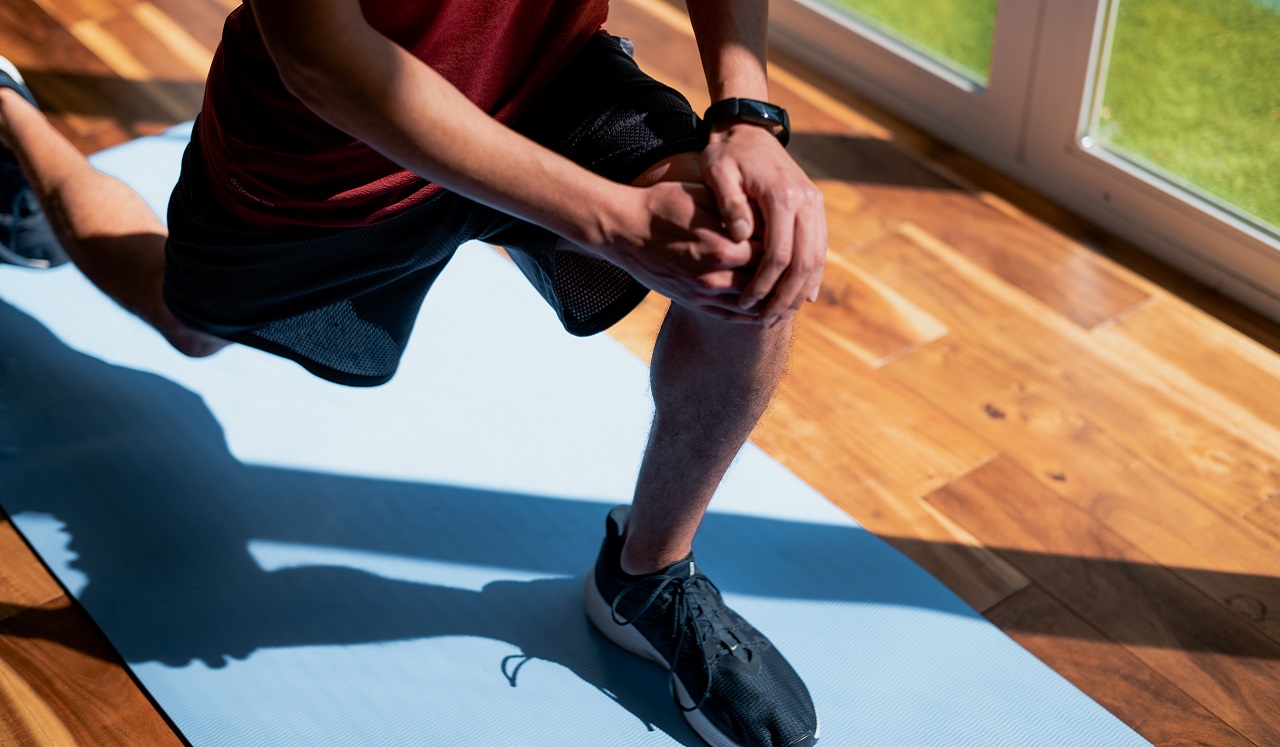The road to the gym is paved with good intentions. When conquering a fitness journey, how do you stick to your routine?
Whether you’re beginning, intermediate or advanced when it comes to fitness, upping your game requires implementing new habits to reach your goals.
“Miracles don't happen overnight,” says Karly Mendez, MS, human performance specialist at Memorial Hermann | Rockets Sports Medicine Institute. “But slow progress can be forever progress.”
And the benefits of a right-sized workout go beyond the physical. You’ll also increase your feel-good hormones, like serotonin and dopamine.
Follow Mendez’s steps to find a fitness routine that fits your goals.
Step 1
Write down your goals. Whatever your fitness level, Mendez says, “The first step is to commit to yourself.” She suggests writing down your motivations and goals. “Make sure it’s visible wherever you’ll see it most, whether that’s the mirror, fridge or front door.”
Step 2
Think big and small when setting goals. “You want to make sure they’re attainable, so start with baby steps of short-term goals on the way to big goals.”
If you dream of completing a marathon, then attempting a 5K and a half-marathon along the way are more likely to get you to that finish line.
Strive for two workouts weekly, as well as walking up to 10,000 steps daily or doing low-intensity cardiovascular exercise for 30-45 minutes. Intermediate exercisers can add another weekly session, Mendez says.
When you’re new to working out or have taken a months-long break, a personal trainer can help you set a reasonable pace, personalized to you. “If you’re advanced and not seeing the changes you’d hoped, it may be time to talk to a dietitian.”
Step 3
Find your personal joy. Workouts should align with both your individual goals and your personality. “You may like doing the same workout each day or you may prefer variety,” Mendez says.
No matter how long you’ve exercised, sample the possibilities to discover what routines you find most fun. “There are tons of workouts on YouTube,” she says. “Try one a week for 20 minutes to narrow down what you really like. If you don’t enjoy something, you won’t do it.”
Variety is vital for beginners and intermediate exercisers, but even advanced athletes should mix it up, she says. You’ll refresh your enthusiasm—while working different muscles. For example, a class in ballet or Pilates will focus on form which can benefit you in other routines.
Step 4
If you follow the all-or-nothing principle, you’ll wind up with nothing. “A little movement is better than nothing, and any movement is better than none,” Mendez says. “If you need to do four 10-minute workouts a day, that’s better than not doing anything.”
Step 5
Prioritize exercise. “It takes time to create a habit,” she says. “When it feels odd not being active, you’re on your way.”
Step 6
Be positive. “Cut yourself some slack and don’t overwhelm yourself with negative thoughts,” Mendez says. They only stop you. No one at the gym is judging you, your fitness level or your body. They’re focused on themselves and their own fitness journey. Rather than comparing yourself and finding fault, remind yourself of the progress you are making towards your goals.
Step 7
Be patient. Allow yourself time to recover. Strengthening muscles starts with tearing fibers down, then giving them time to rebuild stronger. That’s why most fitness trainers suggest a day of rest between weight-lifting workouts.
Step 8
Start slowly and progress at a lower pace to avoid burnout and injury. “Listen to your body,” Mendez says. “It’s OK to take rest days.”
While it may be tempting as a beginner to crank it up with each workout, you’re less likely to get hurt if you increase the intensity gradually, whether it’s cardio or strength training.
“Switching up your routine also can help with burnout.”
If you frequently get injured, a Memorial Hermann pro can analyze your gait, form and muscle imbalances, Mendez says. “Usually, you need more strength training to reinforce your weaknesses.”
Step 9
Surround yourself with supporters and find an accountability partner to whom you can report goals and progress each week.
Step 10
Put your money where your passion is. Determine what activities fit your tastes and lifestyle, whether that’s signing up at a gym, purchasing a bicycle or making an investment in your fitness journey.
“The financial aspect helps, because it’s a financial motivator to get you there,” Mendez says. Investing in weights and a treadmill, elliptical or other cardio machine at home also enables you to exercise when you are pressed for time.
Step 11
Use the 80/20 rule that many healthy eaters adhere to. Instead of cheat days, schedule your pace, with 80% of your workouts being walking or at a pace at which you can talk and breathe through your nose. The other 20% should be intense, whether you choose bootcamp classes or HIIT, high-intensity interval training.
This formula fits beginners, intermediate and advanced exercisers. You alternate all-out intensity and low-intensity bouts. Gradually you extend the length of the high-intensity segments while trimming slower-paced bouts. Walking, cycling, stair-climbing, rowing and other cardio workouts can be adapted to HIIT.
Step 12
Motivate yourself. Track your progress by stating your daily, weekly and monthly goals, and put a sticker on your calendar for each time you work out. “At the beginning of your journey, you only may be able to do 20 squats,” Mendez says. But when you write down what you do, you can see your prowess climb.
Celebrate successes with treats, such as a concert ticket, new fitness gear or a single decadent meal. “That’s how you make your fitness goals last long term,” she says.
"A fitness journey has no end. It’s constant and should be part of everyday life."


